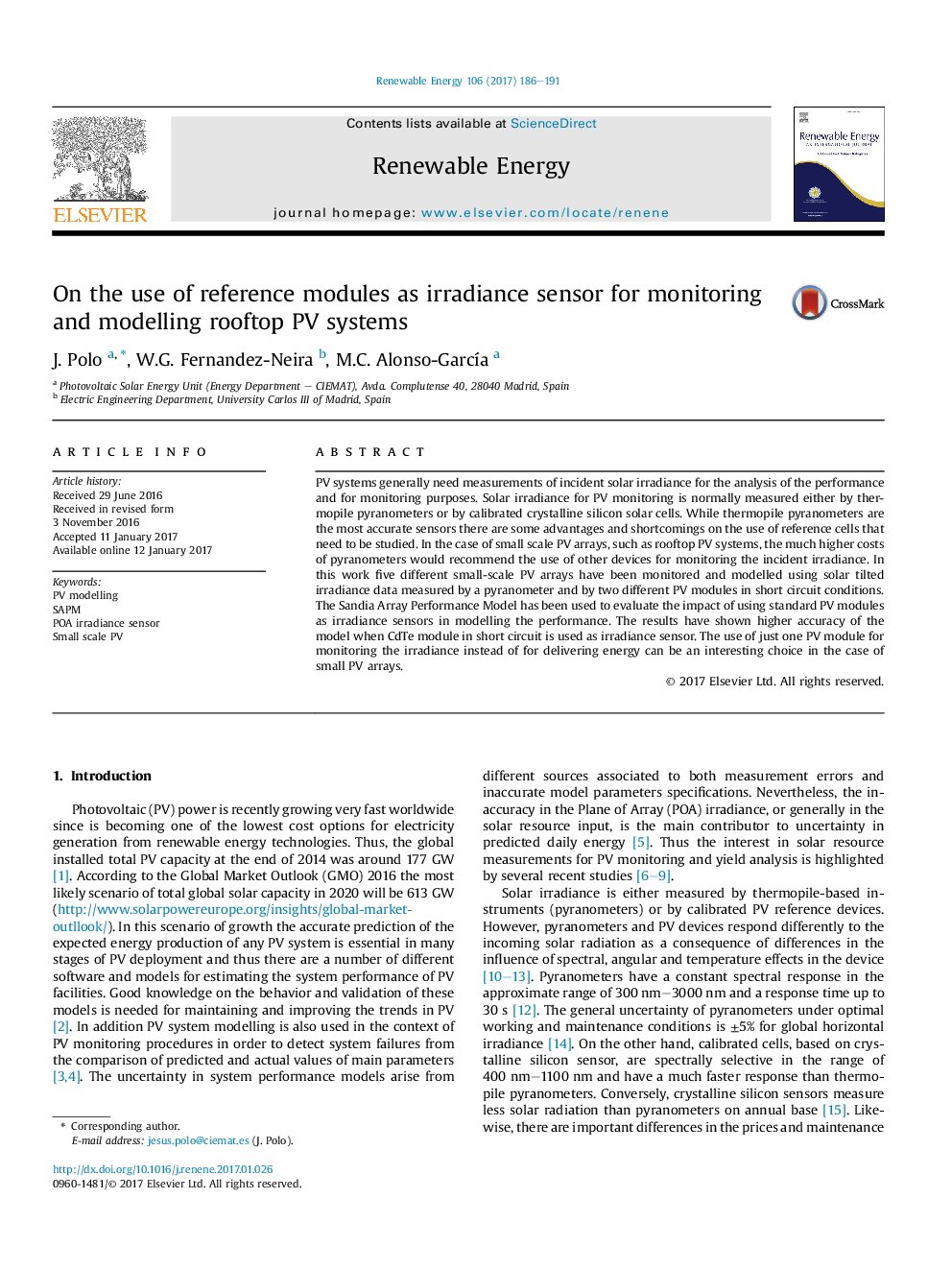| Article ID | Journal | Published Year | Pages | File Type |
|---|---|---|---|---|
| 4926388 | Renewable Energy | 2017 | 6 Pages |
Abstract
PV systems generally need measurements of incident solar irradiance for the analysis of the performance and for monitoring purposes. Solar irradiance for PV monitoring is normally measured either by thermopile pyranometers or by calibrated crystalline silicon solar cells. While thermopile pyranometers are the most accurate sensors there are some advantages and shortcomings on the use of reference cells that need to be studied. In the case of small scale PV arrays, such as rooftop PV systems, the much higher costs of pyranometers would recommend the use of other devices for monitoring the incident irradiance. In this work five different small-scale PV arrays have been monitored and modelled using solar tilted irradiance data measured by a pyranometer and by two different PV modules in short circuit conditions. The Sandia Array Performance Model has been used to evaluate the impact of using standard PV modules as irradiance sensors in modelling the performance. The results have shown higher accuracy of the model when CdTe module in short circuit is used as irradiance sensor. The use of just one PV module for monitoring the irradiance instead of for delivering energy can be an interesting choice in the case of small PV arrays.
Keywords
Related Topics
Physical Sciences and Engineering
Energy
Renewable Energy, Sustainability and the Environment
Authors
J. Polo, W.G. Fernandez-Neira, M.C. Alonso-GarcÃa,
